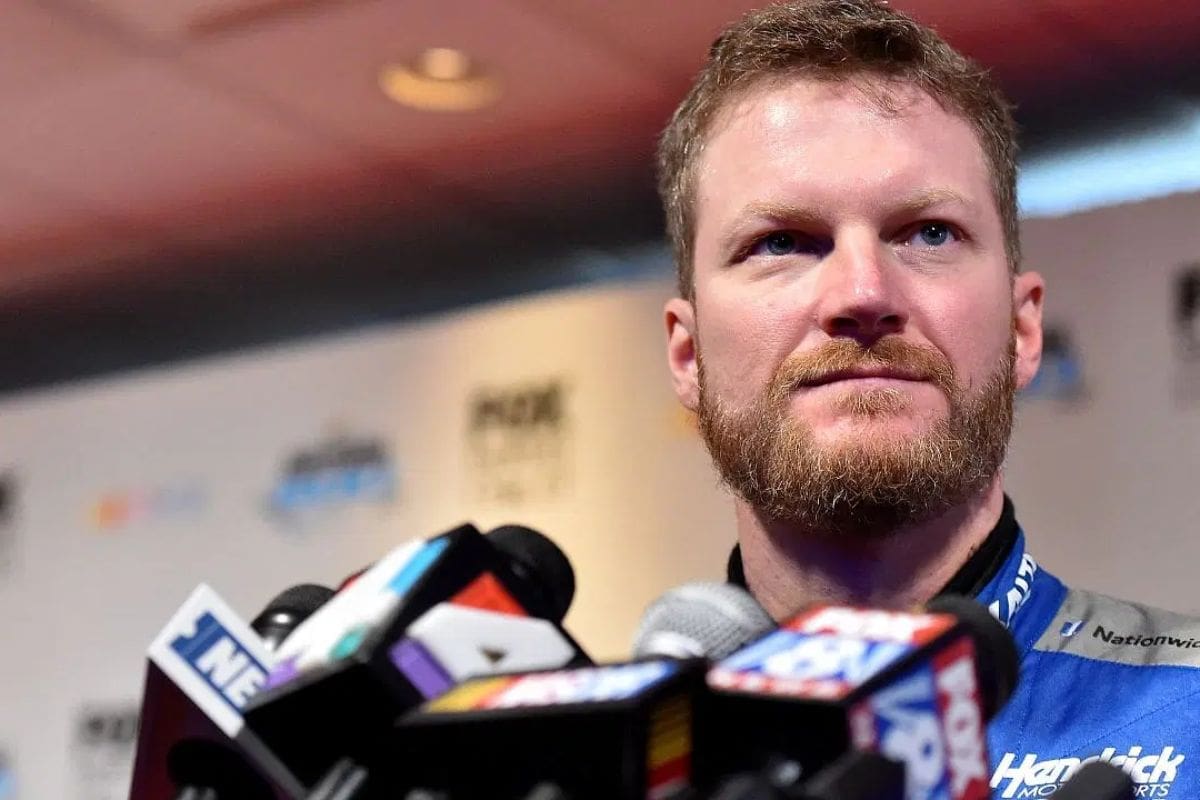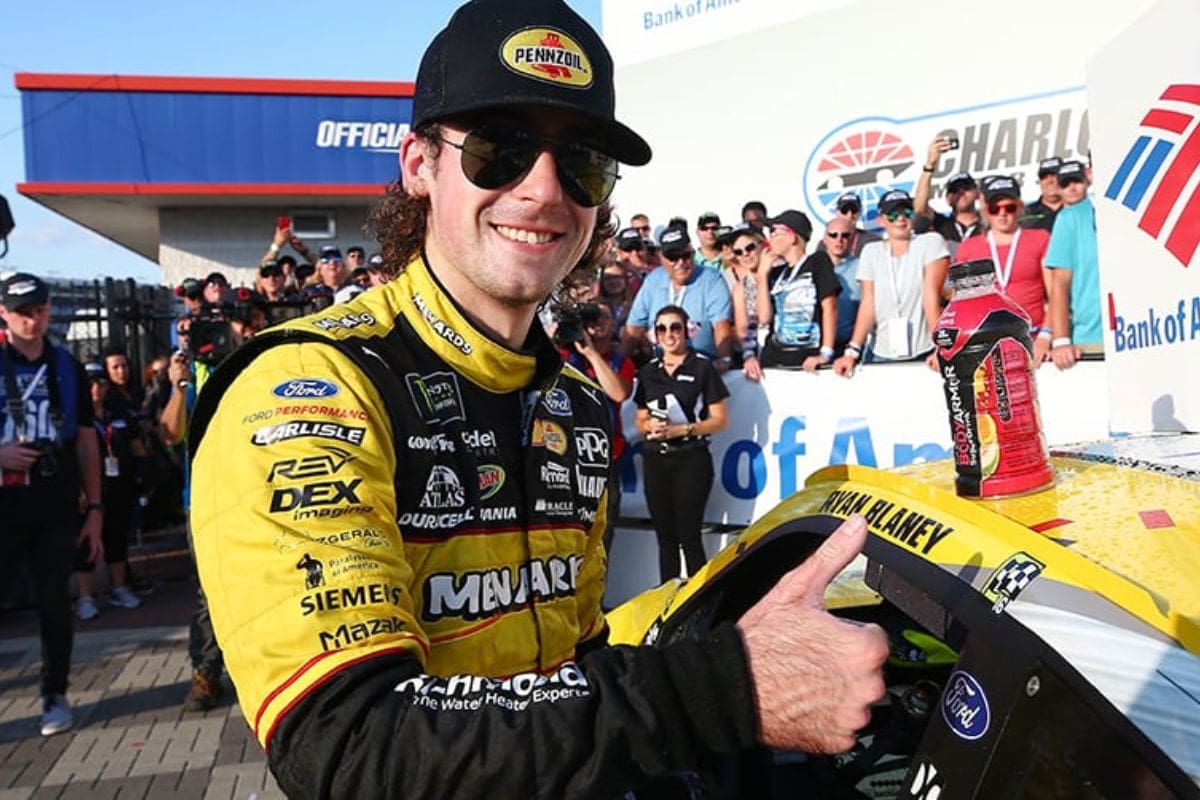Dale Earnhardt Jr. Defends Brad Keselowski’s Strategy: In the high-stakes environment of the Brickyard 400, Dale Earnhardt Jr.‘s defense of Brad Keselowski‘s pit strategy during the race’s final laps invites a deeper examination of decision-making under stress. By prioritizing fresh tires, Keselowski revealed not only tactical expertise but also an understanding of the race’s evolving dynamics. Earnhardt’s insights prompt us to reflect on how such calculated choices can shape the outcome of a race and influence broader narratives within NASCAR. What implications does this have for team strategies and driver autonomy as the season progresses?
Key Highlights
- Dale Earnhardt Jr. supports Brad Keselowski’s pit decision, emphasizing the significance of fresh tires for optimal performance in high-pressure situations.
- Keselowski’s strategy involved a calculated risk regarding fuel management while leading, showcasing his adaptability under stress.
- The pit stop decision reshaped the race’s leaderboard, illustrating the impact of strategic choices on overall race dynamics.
- Earnhardt Jr. critiques NASCAR’s grid reset policy, arguing it undermines team autonomy and the importance of pit strategy.
Dale Earnhardt Jr. Supports Brad Keselowski’s Decision
Dale Earnhardt Jr. stated a compelling defense of Brad Keselowski‘s tactical decision to pit prior to the initial overtime restart at the Brickyard 400, emphasizing the rationale behind the move despite its controversial reception among fans and analysts. Earnhardt Jr. highlighted the necessity of ensuring ideal tire performance in a race marked by varying conditions and competitive intensity. The pit stop not only allowed Keselowski to freshen his tires but also provided a calculated repositioning that could potentially improve his performance in the closing laps.
Keselowski’s choice, while criticized for yielding the inside line to eventual race winner Kyle Larson, was a calculated risk that showcased a broader understanding of the race dynamics. Earnhardt Jr. noted that the decision stemmed from a commitment to performance rather than a mere opportunistic gamble.
Earnhardt Jr. posited that Keselowski’s experience and judgment should not be dismissed lightly. The complexities of race strategy often require quick decision-making, and in this instance, Keselowski’s choice reflected an acute awareness of the race’s ebb and flow. By contextualizing the decision within the broader framework of race strategy, Earnhardt Jr. not only defended the move but also illuminated the intricate considerations that define racing excellence.
Final Laps and Keselowski’s Fuel Gamble
In the final laps of the Brickyard 400, Brad Keselowski faced a high-stakes dilemma as his fuel reserves dwindled while leading the race, forcing him to make a vital decision that could ultimately reshape the outcome. With Ryan Blaney hot on his trail and Kyle Larson rapidly advancing, Keselowski’s choice to pit for fuel just before the green flag became a pivotal moment in the race.
This gamble, while risky, highlighted several key elements of race strategy:
- Fuel Management: The decision to pit reflected an acute awareness of fuel levels and the need to avoid running dry.
- Timing: Pitting before the restart allowed Keselowski to enhance his speed on fresh tires, a tactical advantage.
- Risk vs. Reward: The gamble was not just about fuel but also about positioning against fierce competitors like Larson.
- Adaptability: Keselowski’s ability to pivot under stress showcased a mastery of situational awareness, fundamental for success in NASCAR.
Dale Earnhardt Jr. subsequently reviewed Keselowski’s choices and defended them, suggesting that the context of the race justified his actions.
In the unpredictable landscape of NASCAR, such decisions can define a driver’s career, and Keselowski’s fuel gamble was representative of the risk-taking spirit that characterizes elite racing.
Dale Jr. on Restart Decision and NASCAR Grid Reset
Keselowski’s decision to pit during a vital moment of the race has sparked a broader discussion about the autonomy of teams in making tactical calls, in addition to the implications of NASCAR’s grid reset policies. Dale Earnhardt Jr., in a recent episode of his podcast, emphasized that Keselowski’s crew acted within their rights, knowing they faced potential fuel issues. This tactical risk-taking is representative of modern racing, where split-second decisions can alter the course of an event.
“I honestly feel like it played out the way it should have. Brad Keselowski is not at fault. They were trying to stretch fuel. They knew they were probably on the edge. They interviewed the crew chief, and he said, ‘Hey, we’re probably going to run out, but we’ve already made our bed, so we’re going to go for it.'” -(Dale Jr.)
The grid reset policy, particularly in the context of pit strategy, raises questions about fairness and competitive integrity. Dale Jr. contended that resetting the grid after Keselowski’s pit stop undermines the tactical decisions made by teams during the race. This perspective invites deeper contemplation around the balance between maintaining competition and allowing teams the freedom to make their own choices.
“It’s their prerogative to bring their car to pit road whenever they choose, and it just so happened that they were coming to the green flag and decided to pit. Something happening inside the car let Brad know that he wasn’t going to make another lap. They brought the car to pit road, and that’s no fault of Brad’s,”-(dale jr.)
| Aspect | Dale Jr.’s View | Implication for Teams |
|---|---|---|
| Team Autonomy | Supports crew decisions | Encourages tactical independence |
| Grid Reset Policy | Opposes reset after pitting | Threatens competitive integrity |
| Pit Strategy Importance | Vital for race outcomes | Highlights need for clear rules |
“I don’t think they should throw a timeout. They even said that if they had not thrown the green, they still wouldn’t have allowed them to reset, so it wouldn’t have made any difference. It would have just allowed Blaney a moment to regroup and replan his strategy for the restart as the control car.”-(dale jr.)
Keselowski’s gamble demonstrates the complexities of race strategy in NASCAR, where the interplay between individual team decisions and overarching regulations can greatly impact the racing landscape. Understanding these dynamics is essential for fans and analysts similarly.
Impact on Race Outcome and Blaney’s Reaction
The late-race pit stop by Keselowski not only reshaped the leaderboard but also left a notable impact on Ryan Blaney’s pursuit of victory, emphasizing the unpredictable nature of race outcomes in NASCAR. Keselowski’s decision, which ultimately saw him drop to 21st place, had a cascading effect that altered the dynamics of the race.
Blaney, who finished in third place, was visibly frustrated over the radio, lamenting how the restart scenario allowed the win to slip away. His reaction highlights the emotional rollercoaster that drivers experience as they navigate the complexities of racing strategy and competition. Dale Earnhardt Jr. pointed out that even a caution would not have reset the grid, suggesting that Blaney’s chance to regroup and adapt was limited.
Key impacts of Keselowski’s strategy on the race outcome include:
- Change in Leaderboard Dynamics: Keselowski’s pit stop created a vacuum that altered the positions of multiple competitors.
- Blaney’s Frustration: The communication from Blaney highlighted the intense strain and emotional stakes in high-stakes racing.
- Strategic Implications: Keselowski’s approach sparked discussions on the efficacy of pit strategies in the closing laps.
- Reactions from Peers: Fellow drivers, including Blaney, are often affected by decisions made by their competitors, creating an intricate web of interdependence.
News in Brief: Dale Earnhardt Jr. Defends Brad Keselowski’s Strategy
Dale Earnhardt Jr.’s defense of Brad Keselowski’s tactical pit decision during the Brickyard 400 emphasizes the intricate interplay of tire performance and race strategy in NASCAR.
The choice to prioritize fresh tires presents the critical nature of adaptability and experienced judgment in high-stakes racing environments.
This incident not only highlights the importance of team autonomy in decision-making but also invites further exploration of how tactical choices shape competitive outcomes in motorsport.
ALSO READ: Dale Earnhardt Jr. Urges NASCAR to Keep Sport Alive Amid Bubba Wallace Controversy





